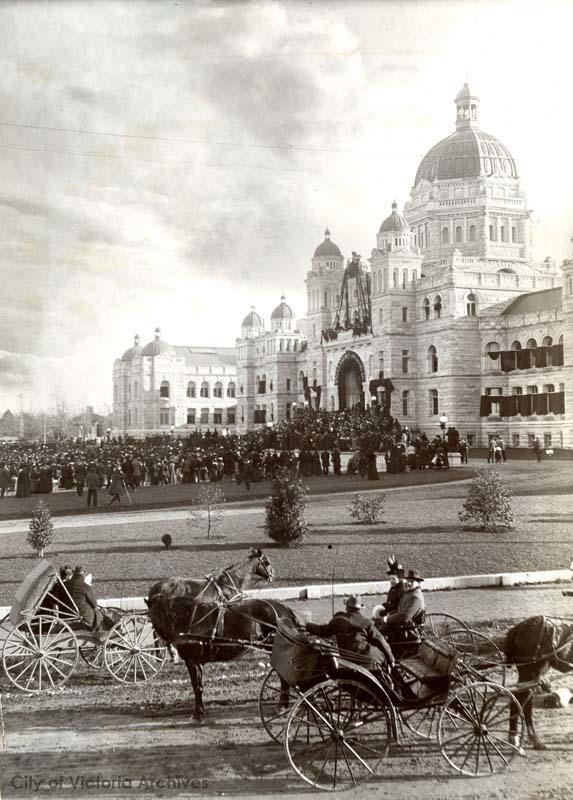Premier Richard McBride commissioned the statue of Queen Victoria in 1912 from Irish artist Albert Bruce-Joy. The bronze statue stands at four metres (13 feet) tall - Queen Victoria was actually just under five feet tall - and is based on a portrait by Franz Xaver Winterhalter that now hangs in Buckingham Palace. Completed and unveiled in Britain in 1914, shipping was delayed until after World War I.
The granite foundation stone was laid in 1919 by His Royal Highness Edward, Prince of Wales. The pedestal is blue marble. The statue itself was unveiled in 1921 by Canada's Governor General, Victor Cavendish, the Duke of Devonshire.
The statue was intended to stand directly in front of the Ceremonial Entrance to the Parliament Buildings - in place of the Centre Fountain - with the Queen facing the Parliament Buildings and the southern light. Instead, it was placed facing the weaker northern light and immediately adjacent to Belleville Street. The sculptor was so upset that anyone wanting to get a good look at the sculpture would have to stand in the "roadway and be run over by a motorcar or fall backwards into the water" that he refused to attend the unveiling.








